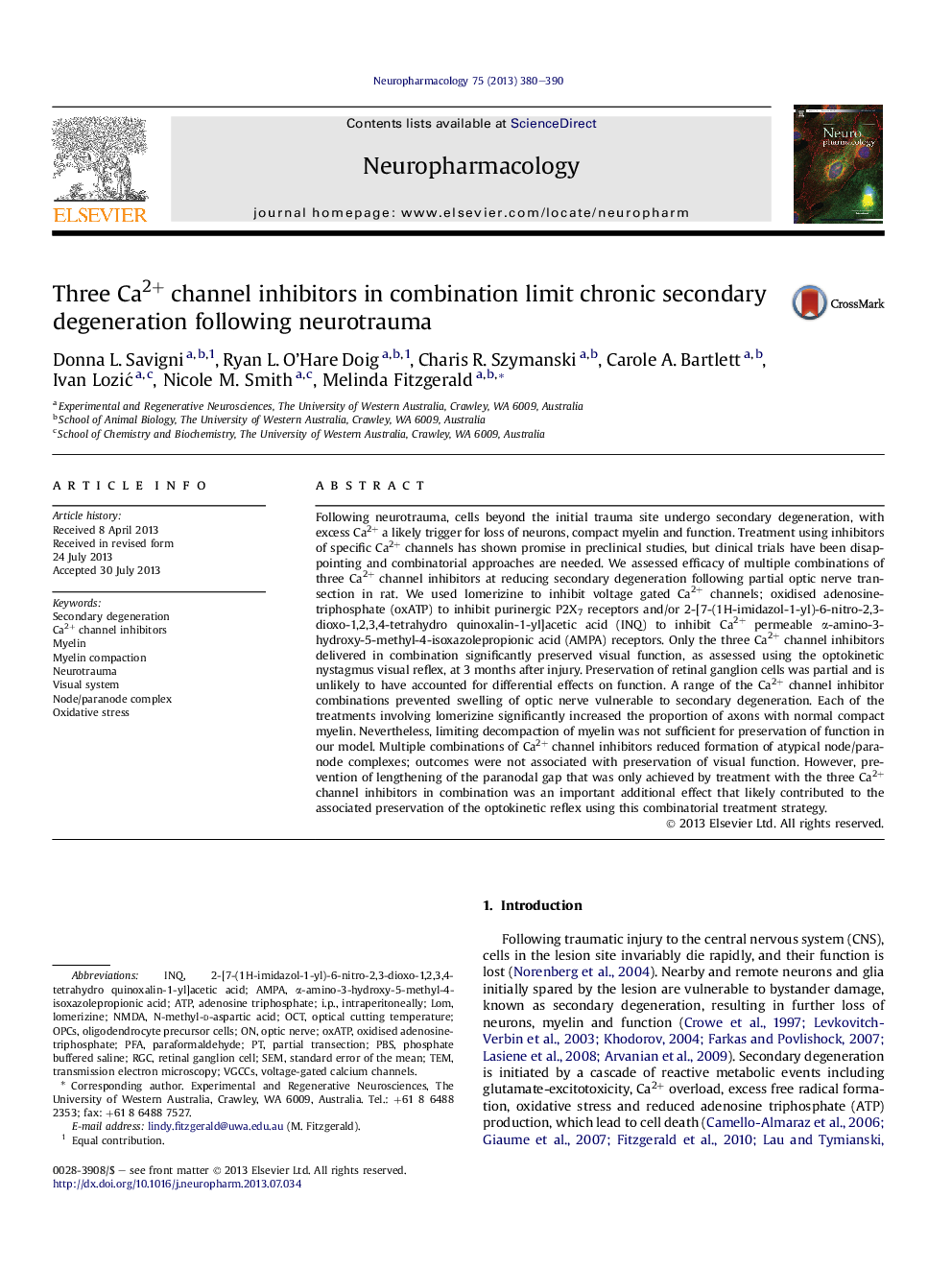| Article ID | Journal | Published Year | Pages | File Type |
|---|---|---|---|---|
| 2493373 | Neuropharmacology | 2013 | 11 Pages |
•A combination of three Ca2+ channel inhibitors limit secondary degeneration.•Three Ca2+ channel inhibitors together preserved optokinetic nystagmus.•Treatments with the VGCC inhibitor prevented myelin decompaction.•The three inhibitors together were required to limit lengthening of the paranodal gap.
Following neurotrauma, cells beyond the initial trauma site undergo secondary degeneration, with excess Ca2+ a likely trigger for loss of neurons, compact myelin and function. Treatment using inhibitors of specific Ca2+ channels has shown promise in preclinical studies, but clinical trials have been disappointing and combinatorial approaches are needed. We assessed efficacy of multiple combinations of three Ca2+ channel inhibitors at reducing secondary degeneration following partial optic nerve transection in rat. We used lomerizine to inhibit voltage gated Ca2+ channels; oxidised adenosine-triphosphate (oxATP) to inhibit purinergic P2X7 receptors and/or 2-[7-(1H-imidazol-1-yl)-6-nitro-2,3-dioxo-1,2,3,4-tetrahydro quinoxalin-1-yl]acetic acid (INQ) to inhibit Ca2+ permeable α-amino-3-hydroxy-5-methyl-4-isoxazolepropionic acid (AMPA) receptors. Only the three Ca2+ channel inhibitors delivered in combination significantly preserved visual function, as assessed using the optokinetic nystagmus visual reflex, at 3 months after injury. Preservation of retinal ganglion cells was partial and is unlikely to have accounted for differential effects on function. A range of the Ca2+ channel inhibitor combinations prevented swelling of optic nerve vulnerable to secondary degeneration. Each of the treatments involving lomerizine significantly increased the proportion of axons with normal compact myelin. Nevertheless, limiting decompaction of myelin was not sufficient for preservation of function in our model. Multiple combinations of Ca2+ channel inhibitors reduced formation of atypical node/paranode complexes; outcomes were not associated with preservation of visual function. However, prevention of lengthening of the paranodal gap that was only achieved by treatment with the three Ca2+ channel inhibitors in combination was an important additional effect that likely contributed to the associated preservation of the optokinetic reflex using this combinatorial treatment strategy.
